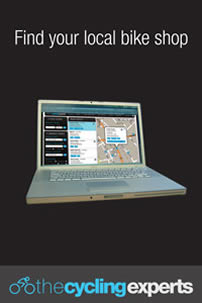Scotland leads UK on tackling the school run
16/08/2007 NewsAs part of the Executive’s National Transport Strategy, £10m of funding over two years, 2006/07 and 2007/08, has specifically been earmarked for ‘Tackling the School Run’, and Sustrans believes that this increased investment and a holistic approach to improving walking and cycling to schools will really get results.
With an extensive school travel project in operation throughout Scotland, children heading back for the new school year this month will see a real difference in facilities which support an active and green journey to school. This is thanks to Transport, Health and Education Directorates working together to recognise the advantages of encouraging children to travel to school in ways that benefit both their health and the environment.
Of the £5 million available in 2006/07, Sustrans received £3.8m to fund a wide range of projects delivered both by the charity and others working within the sector, including local authorities, allowing a completely holistic approach to be taken. Sustrans has received the same level of investment in 2007/08 to continue this work.
All Scottish schools, working on developing or implementing a travel plan, will benefit from the funding. More specifically, 110 schools are benefiting directly from new or improved walking and cycling links, ensuring that more children in Scotland have a safe route to school, 180 schools are benefiting from features like cycle parking and parent waiting areas, with many schools installing bike lockers and storage spaces for wet clothes and helmets.
This significant amount of funding is also helping School Travel Co-ordinators across Scotland to work closely with their schools to raise awareness of the benefits of walking and cycling to school and promoting new routes through their school travel plans. Currently 60% of Scottish schools (1530) are working on or implementing a travel plan.
As Philippa Cochrane, of Sustrans’ School Travel Team in Scotland, says: “With our many years of practical experience in increasing levels of walking and cycling to school, Sustrans is well placed to understand how and where different initiatives work, and to bring them together to ensure the greatest benefit for young people. All of these initiatives are being monitored and surveyed by Sustrans, enabling the charity to develop a comprehensive set of data which will be widely published at the end of the year.”
The evidence is already showing that where a comprehensive range of programmes is in place, the more likely children are to walk and cycle to school. For example, Sustrans, in partnership with the Scottish Executive, Scottish Health Promoting Schools Unit, and three local authorities (Argyll and Bute, Moray, and the Scottish Borders), carried out an innovative initiative in 2006 and 2007 in response to data showing that walking and cycling to school decreases as children move from primary to secondary school. With the help of pupils a year ahead of them, primary pupils about to make the transition to secondary school were shown how to travel to their new schools on foot or by bike.
Pupils agreed that there were advantages of active travel to school and that the transition projects had been a success. They cited benefits such as: keeping fit; social benefits such as spending time with friends; staying healthy; being more environmentally friendly; and practical advantages such as saving money and getting to school more quickly. A number of pupils also identified mental health benefits such as increased confidence, feeling good, feeling calmer and sleeping better.
Another pioneering project about to be launched thanks to money from Scottish Executive is a new school travel DVD, which will be available to all schools in Scotland from September this year. This free education resource promotes the benefits of walking and cycling to school and explains all about why a school travel plan is important. It looks into the problems different types of schools face when trying to achieve safer routes to school for pupils and how schools might overcome these barriers. The DVD is broken down into sections with suggestions for classroom discussions or exercises after each topic.




